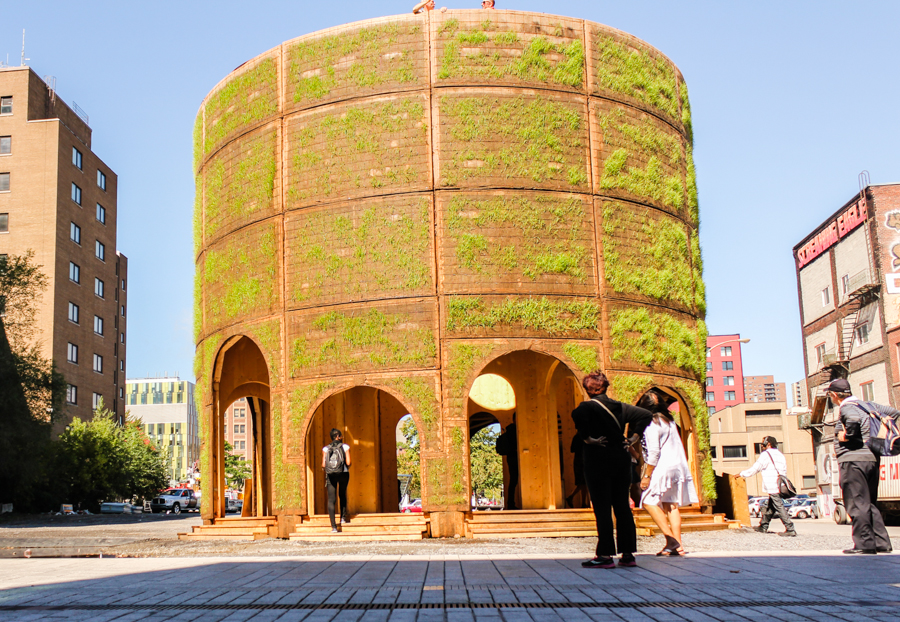Installed on an innocuous, vacant corner of Ste. Catherine and Clark, the Fountain House (or La Maison Fontaine) is perhaps one of Montreal’s most engaging structures; if only because it is a building that grows. An innovative collaboration between artists from Berlin and Montreal, this public piece is no average house. La Maison Fontaine is more accurately an experiment in ephemeral architecture, developed by raumlaborberlin, a Berlin community of architects, urban planners, and, above all, artists. Founded in 1999 by a handful of architects with a desire to explore and push the boundaries of conventional structures, the work of raumlaborberlin has now made its way across the ocean for its first-ever project with Canada, in partnership with the Goethe-Institut and Montreal’s event district Quartier des spectacles.
This particular structure was designed by one of the raumlaborberlin’s founders, Markus Bader, who describes the Fountain House as a celebratory endpoint of water in the city. The installment itself is created out of natural pine, spanning 10.5 metres in diameter. It features a shower that flows through its centre into a small circular pond on the ground floor, where it is then reallocated as mist from the inner walls. The house’s external surface area is covered with grass, plants, and mushrooms. These natural embellishments are supposed to grow throughout the project’s two month installation, allowing The Fountain House to undergo a process of evolution. This evolution will also include a series of events and performances around the House, featuring sound and light installations from seven Montreal artists.
This installment is a true conjunction of the ephemeral natural world and the city life in which Montrealers are so immersed. The Fountain House is one of millions of structures in the city, but, unlike most other pieces of architecture, it is regenerative – growing, transient, and almost entirely organic. Bader explains that the pine used to build the structure could “go back to rot in the forest without causing damage.” It is a beautiful expression of the relationships between water, nature, and cities, and how these relationships can be intimate and harmonious, as opposed to dissonant and decaying. The Fountain House will be hosting various conferences on water within the city, such as one on the quality of Montreal’s local water and the implications of water over-consumption.
Although the Fountain House is conceptually beautiful and initially draws one’s attention, the overall experience of walking within it is disappointing. There is very little to see within the house besides the very small and uneventful pond and a staircase leading up to a section that is even more bare than the one below. Externally the pavilion-like shape of the structure is intriguing, and will probably become more so as the vegetation grows, but overall the experience leaves much to be desired. That said, the concepts behind the architecture are fascinating and will, undoubtedly, promote a dialogue in Montreal on these pressing topics. Hopefully, with the addition of the instalments from local artists and the water conferences, The Fountain House will grow into its concept.
This is part one of a two-part series on The Fountain House. Check back at the end of October for an assessment of the House after its two months of growth.
The Fountain House is open everyday from 11 a.m. to 11 p.m. until October 26, at Esplanade Clark.

